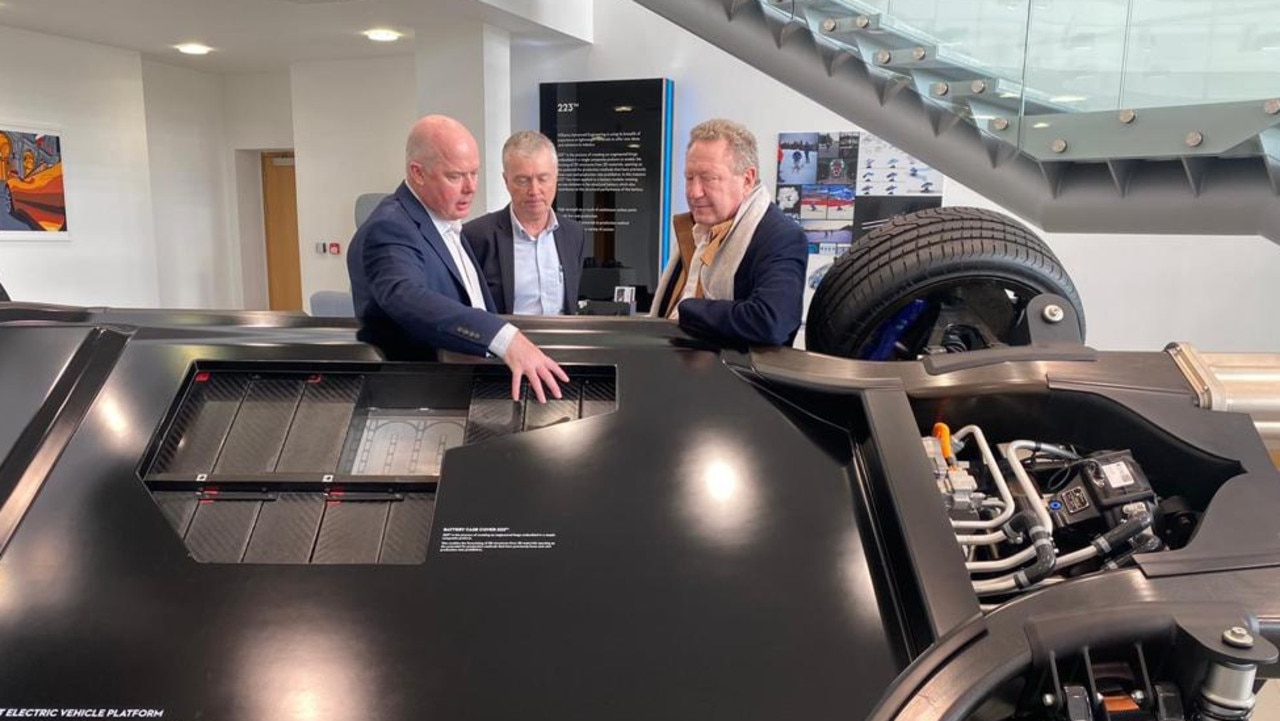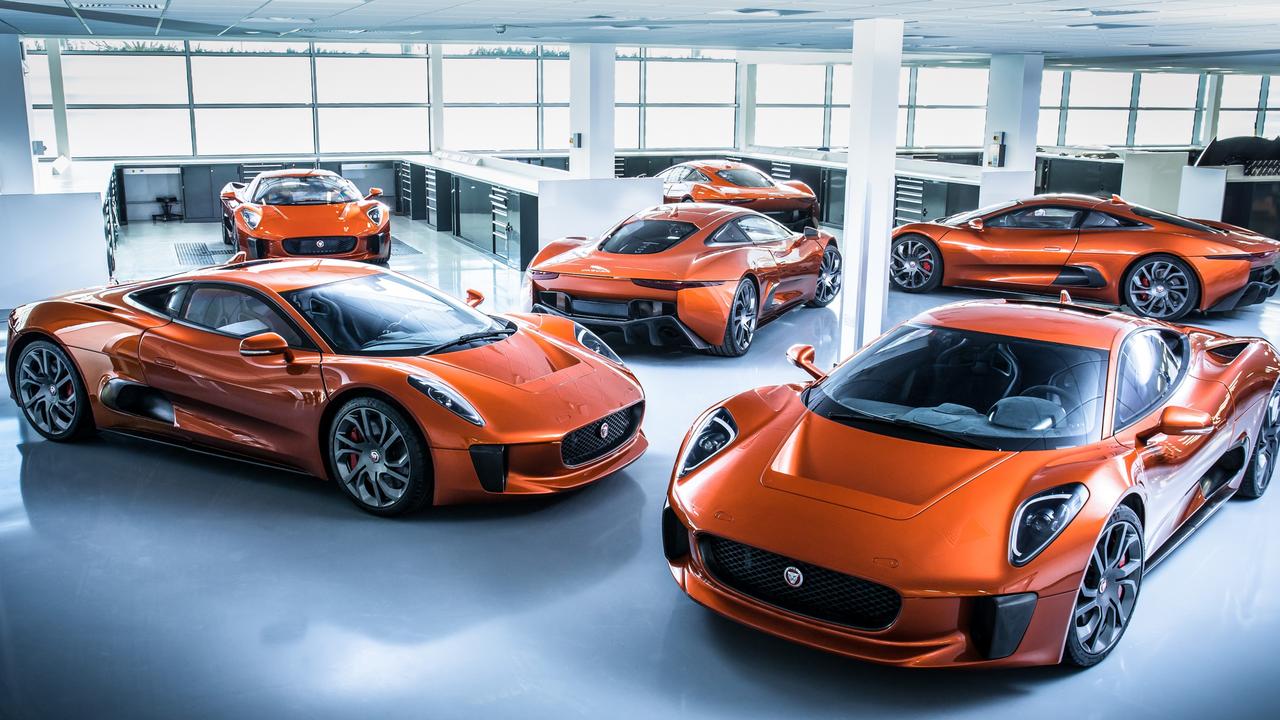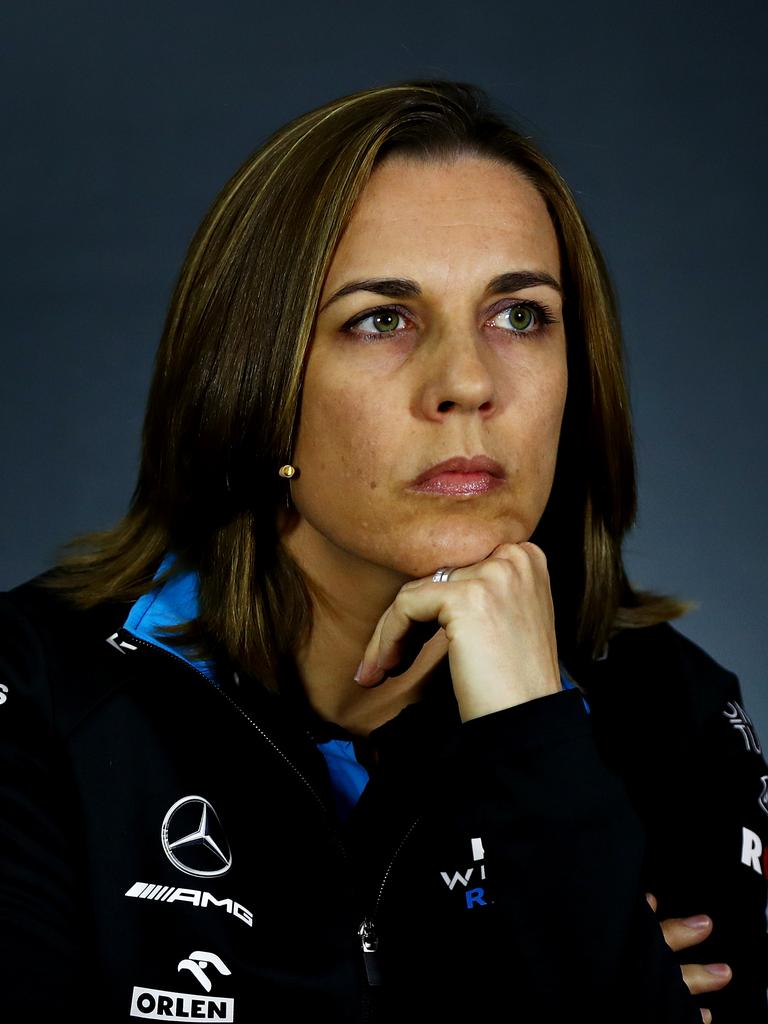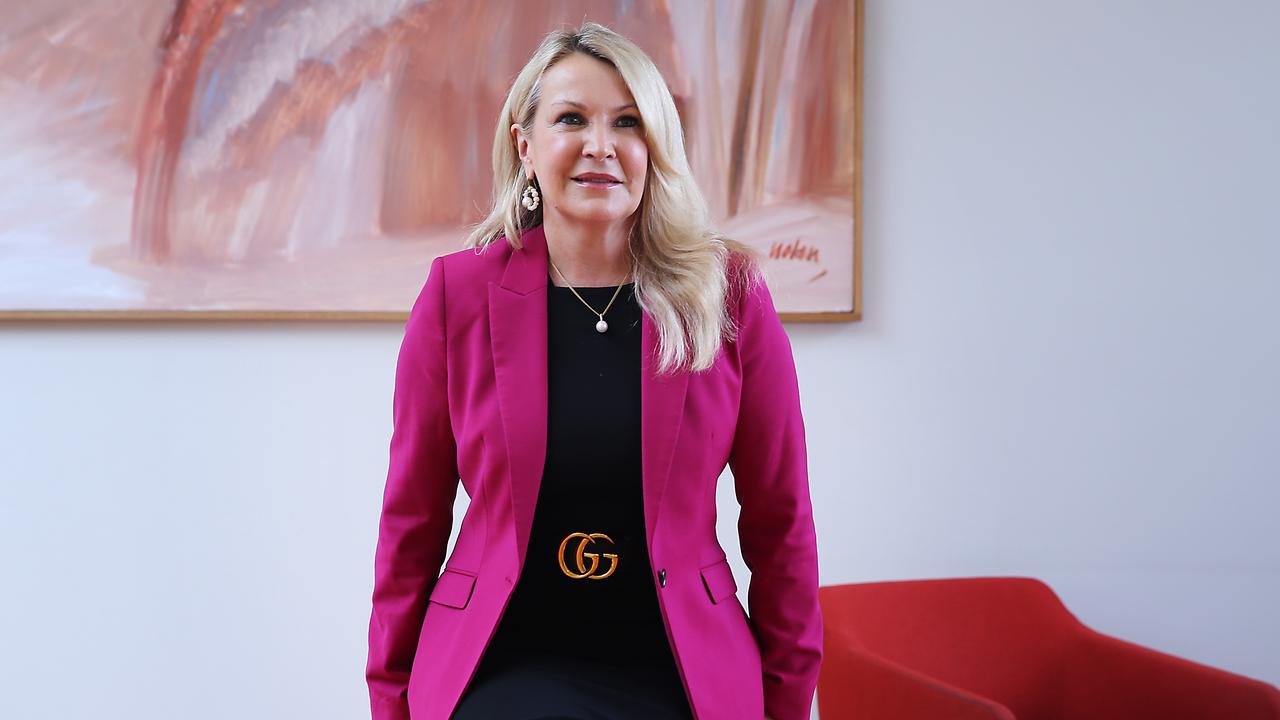Why Andrew Forrest is racing to get back to batteries through Formula 1 technology
The swoop on the engineering arm linked to the Williams racing team gives Fortescue a chance to roll the dice on big battery technology.

What do you get a 60-year-old multi-billionaire whose entire wealth matches almost the entire annual output of Iceland? A fast car. A very fast car.
Make no mistake, Andrew Forrest’s $309m move on Williams Advanced Engineering is about getting his green Fortescue Future Industries logo as close to a high-performing F1 car as much as it is about battery development.
The swoop on the engineering arm spun out of the legendary racing team founded by the late Sir Frank Williams gives Forrest a chance to roll the dice on today’s big battery technology over tomorrow’s green hydrogen. And Forrest, backed by Fortescue’s bulging cash flows, has paid boom-time prices for the ticket.
The mining magnate visited the Williams Engineering factory in Gove, Oxfordshire, it shares with the F1 team as a side trip during last November’s COP26 climate change tour where it was all things speed that caught Forrest’s attention.
Links between Fortescue and Williams Engineering started just over a year ago with the

British company designing and building a hi-tech but conventional battery system to power an electric mining haul truck.
With Forrest’s ambitious plan of moving his iron ore miner to net neutral scope 1 and scope 2 emissions by 2030, there was a feeling inside the Fortescue camp that its current big truck supplier Caterpillar was not moving fast enough on electric technology to hit this target.
While Caterpillar led the way in autonomous driving technology, which is used right across Fortescue’s near 200 strong fleet of haulage trucks, at this stage it is in the very early stages of EV heavy truck development with an investment in US-based auto tech player Fisker.
Rival BHP is working with its Japanese truck supplier Komatsu, which is more advanced in the development of electric drivetrains with the e-Dumper. This has left Fortescue with only a limited runway to hit its targets.
Diesel emissions currently represent 26 per cent of Fortescue’s total emissions, while also a significant factor in unit costs.
The Williams Engineering truck project with Fortescue includes the design and construction of a bespoke battery electric powertrain with the ability to regenerate power as the truck travels downhill.

This is being designed and built in the UK with testing taking place on Fortescue’s Pilbara operation. Elsewhere, Williams Engineering is working with rival miner Anglo American in the development of a battery to be used in hydrogen-powered mining haul trucks.
The aim for Fortescue if all goes well is to commercialise the battery technology to other mining companies, including rivals BHP and Rio Tinto.
Williams Engineering, while sharing substantial links with the F1 racing team, was split from the troubled Williams Grand Prix team in 2017. At the time Williams saw commercialisation prospects in the engineering arm that was in the early stages of developing battery technology. A split also made it easier to secure a much-needed cash injection in the business.
Through a series of transactions in December 2019, British private equity player EMK Capital bought Williams Engineering for the equivalent of $89m.

This means the sale to Forrest on Monday has delivered a substantial windfall to the low-profile EMK in a little over two years. Indeed, having Fortescue as a marquee customer on a long-term project, helped boost the current valuation.
In August of 2020 private equity player US-based Dorilton purchased all of the Williams racing team. And it was this deal that formalised the split between the racing arm and the engineering arm given it formally ended the Williams family’s cross-shareholding in both – although the two companies still share a headquarters.
The question is can it deliver for Forrest?
Still a start-up
In a forensic series on Fortescue’s green arm Fortescue Future Industries by my colleagues Nick Evans and John Stensholt, the track record is for Forrest to talk up a big game on green hydrogen amid frustration from Fortescue investors who would rather be on board a profitable iron ore miner.
Williams Engineering is a bit further down the road on battery technology, which like autonomous driving can deliver cost benefits to a remote mine site.
Williams Engineering’s most recent accounts for the year to end December 2020 highlight surging demand for its “high-performance electrification” technology as well as commercialising its IP and engineering products but it remains loss-making.

The company, which employs 288 staff, is still very much a start-up and its hungry for capital to fund its research.
Revenue of £42.5m ($80.3m) in 2020 was down from £63.6m year earlier, although it noted its consulting operations were hit by Covid. Williams Engineering posted a loss in 2020 of £14.6m from just breaking even a year earlier.
There is a local link for Forrest with Williams Engineering headed by Aussie Craig Wilson.
Wilson started out as an engineering apprentice at Toyota’s Altona plant in Melbourne. He has also worked with UK brand Jaguar and also had a stint running Holden Factory Racing Teams in the V8 Supercars.

Still, Forrest’s acquisition should give some momentum to bringing “heavy” EVs into Australia. As the recent AdBlue fuel additive crisis showed, as a nation we are heavily reliant on highly polluting diesel fuel. Indeed Australia lags much of the world in the electric shift of construction and heavy trucks. Even in the transport space, of the 58 electric truck models available in North America, Europe, and China only 14 and mostly smaller ones at that are available to the Australian market.
The deal comes as outgoing Fortescue chief executive Elizabeth Gaines prepares to deliver the miner’s quarterly update on Tuesday. While Western Australian premier Mark McGowan’s border backflip caught the mining industry off guard, with a delay in the reopening while Covid case numbers run hot in the eastern states, it remains a silver lining for the sector. Miners have been running with lean staff numbers on and off for the past 18 months during periods of closure of the Western Australia state border.

For miners the management of a labour shortage in the near term – including the deferral of non-essential work – is easier and a far less riskier exercise than the prospect of Covid causing forced isolation or illnesses through remote mine workforces which could trigger site shutdowns.
Speaking on Bloomberg TV on Monday, Fortescue’s Gaines was measured in her response to McGowan’s move, saying the company was working closely with the state government.
“We were looking forward to borders reopening knowing we have a very high rate of vaccination, we have other testing procedures in place to ensure we fully test anyone who travels to one of our sites so we’ve been working through that for some time for now,” Gaines said on Monday. “We would like to see at some point greater certainty around the opening of borders.”
johnstone@theaustralian.com.au
More Coverage
Originally published as Why Andrew Forrest is racing to get back to batteries through Formula 1 technology




